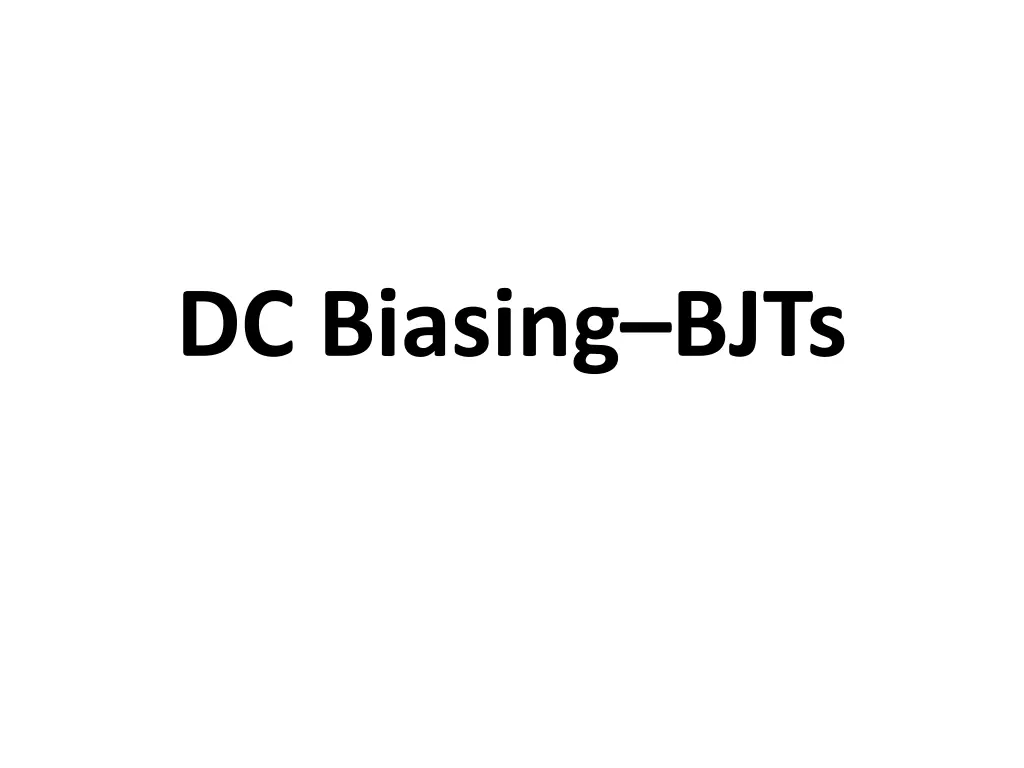
Understanding DC Biasing Techniques for BJTs
Explore DC biasing techniques for bipolar junction transistors (BJTs) including emitter-stabilized bias circuits, input and output loops, improved biased stability, and saturation levels. Enhance your knowledge with required readings and insightful images to grasp the concepts effectively.
Download Presentation

Please find below an Image/Link to download the presentation.
The content on the website is provided AS IS for your information and personal use only. It may not be sold, licensed, or shared on other websites without obtaining consent from the author. If you encounter any issues during the download, it is possible that the publisher has removed the file from their server.
You are allowed to download the files provided on this website for personal or commercial use, subject to the condition that they are used lawfully. All files are the property of their respective owners.
The content on the website is provided AS IS for your information and personal use only. It may not be sold, licensed, or shared on other websites without obtaining consent from the author.
E N D
Presentation Transcript
Sources & Required Reading ROBERT BOYLESTAD & LOUIS NASHELSKY, ELECTRONIC DEVICES AND CIRCUIT THEORY, 7th edition 2
Emitter - Stabilized Bias Circuit Adding a resistor (RE) to the emitter circuit stabilizes the bias circuit.
Improved Biased Stability Stability refers to a circuit condition in which the currents and voltages will remain fairly constant over a wide range of temperatures and transistor Beta ( ) values. Adding RE to the emitter improves the stability of a transistor.






















